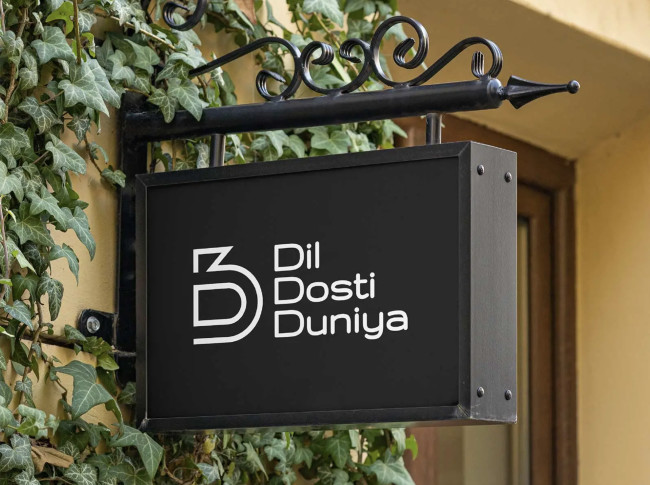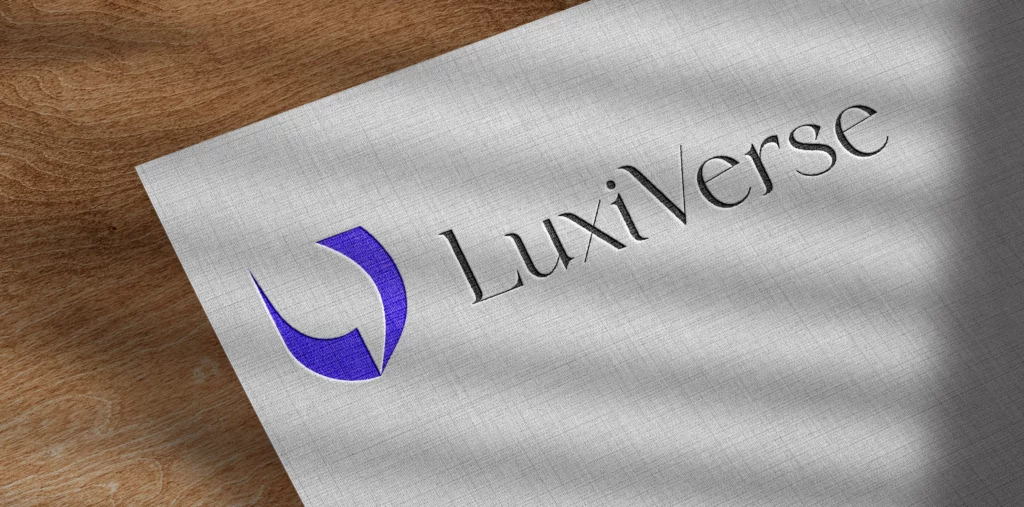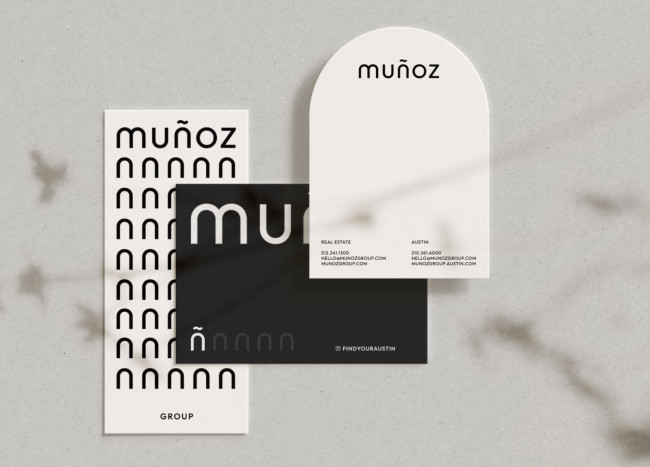Hilton Supra interviews Enes Sehzade, Managing Director of FIMA PR, in the latest episode of citiesabc YouTube Podcast. The two discuss innovative public relations and business strategies in the age of rapidly evolving technologies. The interview is live on citiesabc.com and openbusinesscouncil.org.

Embracing Innovation In Public Relations And Business Strategies: Enes Sehzade, MD Of FIMA PR, In Citiesabc YouTube Podcast
The rise of digital platforms has shifted PR from traditional press releases and media relations to a more digital-centric approach. According to GlobalNewswire, the global market for Digital Advertising and Marketing is projected to reach a revised size of US$786.2 Billion by 2026, growing at a CAGR of 13.9% as compared to 2020.
In this episode of citiesabc, Enes Sehzade and Hilton Supra discuss the dynamics of the PR industry owing to the shifting market trends and demands, and how technology is enabling PR professionals to tailor their business strategies and campaigns accordingly.
With extensive expertise in PR, Fintech, and marketing, Enes specializes in creating innovative Public Relations strategies, business communications (both internal and external), community building, and operational excellence. FIMA PR is a PR, advertising, communications, event management, networking, business matchmaking, marketing consultancy, application development, and web development company that Enes established in 2019.
“We analyze the overall landscape to identify opportunities and adopt tailored strategies for challenging markets. We utilize tools and methodologies that allow us to monitor, measure, refine a lot of efforts to ensure that we constantly meet our KPIs (Key Performance Indicators)”, Enes said.
Tech tools are shaping the future of the PR industry with new dimensions by offering innovative solutions that streamline communication, enhance audience targeting, and provide invaluable insights.
“PR means communication, which means a lot of engagement translating into targets. These are the KPIs. In this ever-evolving sector, we don’t just craft messages, we build narratives that resonate with our audience”, Enes told Hilton.
From data analytics platforms that allow PR professionals to measure campaign impact with precision to influencer marketing software that identifies ideal brand advocates, these tools are redefining PR strategies. Automation and Artificial Intelligence (AI) are further optimizing media monitoring and content creation processes, improving efficiency and freeing up time for PR experts to focus on strategy. In this tech-driven era, these tools have become indispensable, helping businesses to scale beyond socio-geographical boundaries.
Enes ?ehzade is an entrepreneur and accomplished CEO with extensive experience in PR, Fintech, and marketing. As the Managing Director at FIMA, he focuses on delivering exceptional services that consistently surpass client expectations. Enes offers expertise in Public Relations Strategy, Business Communications (Internal and external), Community Building, and Operational Excellence. With a profound understanding of the industry and a dedication to excellence, Enes is a trusted partner for businesses aiming to elevate their brand and reputation.
With a background in PR and business communications, Enes Sehzade possesses a deep understanding of the strategies necessary for success. His innovative approach to PR strategies ensures his clients benefit from positive media exposure, adept reputation management, and effective crisis communication. Moreover, Enes specialises in crafting and executing internal and external communication strategies that align with clients’ objectives, creating a cohesive brand message across all channels.
To know more about Enes, visit https://www.openbusinesscouncil.org/wiki/enes-sehzade
Hilton Supra is a business and financial industry veteran and thought leader. Hilton has more than 30 years of Finance, Investment, Banking, and Asset Management experience in international markets namely London, Europe, Africa, and Asia. This while having a passion for growing businesses, fashion, and new technologies, especially fintech and blockchain where he has been deeply involved since these technologies’ inception. Now, Hilton is co-leading the fashion directory fashionabc as well as technology startup Ztudium, a builder of 4IR platforms (using blockchain, AI and IoT data analytics).
From Quantitative Asset Management, Capital Markets, Trading software, Hedge Funds, and Private Equity, Hilton has worked for Morgan Grenfell, Deutsche Bank, AXA Investment Management, EIM Fund of Hedge Funds (responsible for $2.4bn of $13bn), and Cheyne Capital.
Hilton is a graduate in Engineering from Oxford Brookes University and a Master’s in Finance at London Business School. Hilton has always been on the leading edge of innovation and technology in banking, derivative trading, quantitative asset management, hedge funds, and since 2015 the application of FinTech, AI, and blockchain to enterprise solutions.
Hilton Supra is a partner and board member at ztudium, and the co-founder and one of the leading personalities driving techabc, openbusinesscouncil.org and fashionabc.org platforms.
Learn more about Hilton Supra on https://openbusinesscouncil.org/wiki/hilton-supra
https://www.linkedin.com/in/woonsuk-lee-76b789191/
https://www.linkedin.com/company/cocone-global/
https://twitter.com/Cocone_Universe
https://nfttallinn.com/speakers/woonsuk-lee/
https://reflectfest.com/speaker/woonsuk-lee/
About citiesabc.com
https://twitter.com/citiesabc_
https://www.instagram.com/citiesabc
About openbusinesscouncil.org
https://www.openbusinesscouncil.org/
https://twitter.com/openbusinesshq
About fashionabc.org
https://www.instagram.com/fashionabcorg/
About Dinis Guarda
https://twitter.com/dinisguarda
https://www.instagram.com/dinisguarda_/
https://openbusinesscouncil.org/wiki/dinis-guarda
This article explores some of the best modern logo designs created by the top logo designers today.
Most companies opt for modern designs to show they can ride the latest trends and communicate with an ever-changing target audience. That's why the best logo designs feature modern elements that demonstrate their commitment to catching up with the present times.

Standout Features:
Studio Raízes - Arquitetura & Emoção's logo design by Kangoo Works taps into the natural elements and translates it into a modern logo design with a fantastic concept.
The logo design takes inspiration from "Raízes," meaning "roots" in Portuguese. It embodies nourishment and growth, akin to a tree's roots. The typographic design and the earthy color palette reinforce this theme and create a unique and cohesive visual representation.

Standout Features:
D3 Cafe & Restro's logo design by XAXs Corps features few visual elements, making this simple design stand out.
The most successful logo designs are usually simple and uncluttered. That's why people easily recognize and remember them. The logo boasts a monogram incorporating D and 3, a playful touch to the brand name.
Its versatile design makes incorporating the logo into various visual assets effortless. The modern-looking typeface gives off a premium yet welcoming look, which is what the restaurant aims to be as a fine dining establishment.

Standout Features:
Design agency FIMA tapped into its creative roots to develop a modern logo design for LuxiVerse, focusing on making it look effortlessly elegant.
The logo design features a stylish serif typeface, thin and seemingly lightweight. They also used deep purple and black as the primary colors, usually associated with luxury and power. Lastly, the horizontal layout makes it easier for artists to use their logos in print or website designs.

Standout Features:
For Concept Room's logo design, Sign Up Digital interlinked the brand's initials (C and R) and designed a modern logo that fits well with the brand.
The creative representation of brand initials in the logo is simple and convenient, a reflection of the brand as a home interior shop. Modern and sleek, this perfectly captures the essence of the store and helps with brand recall.

Standout Features:
With its clean and minimalist design concept, the Muñoz Group’s logo design by DD.NYC® makes it to our list of the best modern logo designs.
The curved-edged letters provide the right amount of softness to the otherwise rigid exterior of the logo, and the monochromatic color story makes it easier for artists and designers to incorporate the logos in various visual assets, from print to website designs and anything in between.

Standout Features:
Botteghe Sostenibili tapped logo designer Mauro Ghezzo to develop a modern logo design that best represents them as a locally-owned sustainability-focused brand. The result was a simple, impactful, and remarkable logo that was perfect for them.
One of the noticeable features of this logo design is the paper bag placed below the stylized B, which is a nod to its environmentally aligned values. They also used a sans-serif font that adds a layer of trust to the brand. After all, sans-serif fonts symbolize reliability and trustworthiness.

Standout Features:
For Next Frotas’s logo design, design agency Guedz used symbols that the audience will easily capture without being too obvious, such as the more-than (>) sign.
Having it as a part of the brand’s spelling, it signifies the desire of Next Frotas to be more than just a demobilization company for businesses. The simple design makes them look like they mean business, and it is indeed simple yet impactful.

Standout Features:
The Bad Leader’s logo design by WR Digital Marketing combines various visual elements seamlessly without looking too overwhelming to the target audiences.
From the two open triangles on top of each other signifying progress to the lightning on the D in Bad implying strength and power, to the thick sans-serif font symbolizing security and safety, this modern logo design ticks all the boxes and so much more.
SOURCE DesignRush
59% of PR professionals cite technology as a major driver of industry transformation. DesignRush outlined the best public relations firms that help companies establish a strong reputation and stay relevant.
MIAMI, June 15, 2023 /PRNewswire-PRWeb/ -- 59% of PR professionals believe technology will play a major role in driving industry transformation, as per USC Annenberg Center. In fact, according to CEOs, customer experience optimization, measurements of results, and audience targeting are among the top three areas of communications that they wish to advance with the help of technology.
DesignRush, a B2B marketplace connecting businesses with agencies, announced the best public relations firms that have the technology and resources to help businesses stay relevant, build a strong brand image, and maintain a positive brand reputation.
The top public relations firms in June are:
1. Defamation Defenders - defamationdefenders.com
Expertise: Online Review Management, Complaints Defense, Business Defamation Removal, and more
2. TrizCom Public Relations - trizcom.com
Expertise: Digital PR Services, Crisis Communications, Event Planning & Promotion, and more
3. Rocket Social Impact - rocketsocialimpact.com
Expertise: Proactive Media Relations, Thought Leadership Strategies, Influencer Strategies, and more
4. OGS - ogscommunication.com
Expertise: Media Relations, Communication & Social Media Management, Event Organization & Management, and more
5. More Diverse Voices - morediversevoices.com
Expertise: Press Release Development, Communication Coaching, Educational Workshops, and more
6. FinTech Matcher - fintechmatcher.com
Expertise: Digital PR, Corporate Communication, Digital & Traditional Media Relations, and more
7. Pinnacle Communications & Media - pinnacleresults.ca
Expertise: Media Crisis Management & Communications, Media Relations & Events, Marketing & Communications Training, and more
8. SLPR Worldwide - slpr.com.my
Expertise: Corporate Communications, Crisis Mitigation, Media Relations, and more
9. Sunrise Health Communications - sunrisehealthcommunications.com
Expertise: Reputation Building, Crisis & Issue Management, Media Training, and more
10. 406 Strategic Communications - 406strategiccommunications.com
Expertise: Press Release Content Development, Communications Consulting, Corporate Communication Plan Development, and more
11. Jeff Social - jeffsocialmarketing.com
Expertise: Crisis Management, Reputation Management, Social Media Management, and more
12. Clearstream - clearstreamagency.com
Expertise: Event Planning, Reputation Management, Media Relations, and more
13. Just Get Known - justgetknown.com
Expertise: Promotions & Events Management, Advertisement Content Production, Media & Advertising, and more
14. Mishal - mishal.com.pk
Expertise: Media Relations, Media Consultancy, Strategic Communications, and more
15. Lawlor Media Group - lawlormediagroup.com
Expertise: Media Coverage, Event Management, Crisis Management, and more
Brands can explore the top public relations firms by location, size, average hourly rate, and portfolio on DesignRush.
About DesignRush:
DesignRush.com is a B2B marketplace connecting businesses with agencies through expert reviews and agency ranking lists, awards, knowledge resources, and personalized agency recommendations for vetted projects.
Media Contact
Maja Skokleska, DesignRush, 8008565417, maja@designrush.com
SOURCE DesignRush
As businesses and organizations seek to establish a strong public image, media relations play a vital role in shaping and influencing public perception. Through strategic engagement with the media, businesses can build their brand, gain positive exposure, and foster meaningful relationships with key stakeholders. In this article, we'll explore the importance of media relations and how it can help businesses succeed.
Media relations is crucial for building a strong brand image and establishing meaningful relationships with stakeholders. Learn more about the importance of media relations and how it can help your business succeed.
Introduction:
In today's fast-paced digital world, businesses need to establish a strong public image to gain credibility, attract customers, and retain their position in the market. One of the most effective ways to do this is through media relations. Media relations is the practice of building relationships between businesses and journalists to achieve positive media coverage. It involves developing a strategy to engage with journalists, pitching stories, and responding to media inquiries. When done right, media relations can help businesses build a strong brand image, gain credibility, and establish long-lasting relationships with key stakeholders.
The Role of Media Relations in Building a Strong Public Image
Media relations plays a crucial role in shaping public perception of a business. The media is a powerful tool that can be used to influence people's opinions and attitudes towards a brand. By engaging with the media, businesses can reach a wider audience, gain credibility, and establish themselves as a thought leader in their industry. Positive media coverage can help businesses attract customers, improve their reputation, and build trust with stakeholders.
The first step in building a strong media relations strategy is to establish relationships with journalists. This involves identifying the right journalists to pitch stories to, understanding their areas of interest, and building a rapport with them. Journalists receive hundreds of pitches every day, so it's important to personalize your approach and make your pitch stand out. By building relationships with journalists, businesses can increase their chances of getting positive media coverage and establish a long-lasting relationship with the media.
Once businesses have established relationships with journalists, the next step is to pitch stories. A good pitch should be timely, relevant, and newsworthy. It should capture the journalist's attention and provide a unique angle on a particular topic. By providing journalists with valuable content and insights, businesses can establish themselves as a thought leader in their industry and gain positive media coverage.
In addition to pitching stories, businesses should also be prepared to respond to media inquiries. Journalists often require quick and accurate information to meet their deadlines, so it's important to have a designated spokesperson who can respond promptly to media inquiries. By providing journalists with timely and accurate information, businesses can establish credibility and build trust with the media.
The Benefits of Media Relations for Businesses
Media relations offers a wide range of benefits for businesses. Here are some of the most significant benefits:
Positive media coverage can help businesses establish credibility and gain the trust of their target audience. By being featured in reputable publications and news outlets, businesses can demonstrate their expertise, authority, and credibility.
Media relations can also help businesses improve their reputation. By getting positive media coverage, businesses can enhance their image and establish themselves as a trusted and respected brand.
Media relations can help businesses reach a wider audience and increase their visibility. By being featured in the media, businesses can attract new customers, generate leads, and increase their brand awareness.
Media relations is also important for crisis management. In the event of a crisis, businesses need to be prepared to communicate effectively with the media to mitigate damage to their reputation. By having established relationships with journalists, businesses can quickly disseminate accurate information and manage the narrative during a crisis.
Media relations is not just about getting positive media coverage in the short-term. It's also about building long-lasting relationships with key stakeholders, including journalists, customers, and investors. By engaging with the media and providing valuable insights, businesses can establish themselves as a thought leader and build trust with their audience.
Common Misconceptions about Media Relations
Despite its many benefits, media relations is often misunderstood. Here are some common misconceptions about media relations:
One of the biggest misconceptions about media relations is that it's expensive. While it's true that businesses may need to invest in resources such as media databases and PR agencies, media relations can also be done in-house at little to no cost.
Another misconception about media relations is that it's only for big businesses with large PR teams. In reality, media relations is important for businesses of all sizes, from startups to established corporations.
Finally, some people believe that media relations is easy and anyone can do it. However, effective media relations requires a strategic approach, strong relationships with journalists, and a deep understanding of the media landscape.
FAQs
Q- What is the difference between media relations and public relations?
Media relations is a subset of public relations that focuses specifically on building relationships with journalists and getting positive media coverage.
Q- How do I build relationships with journalists?
Building relationships with journalists requires a personalized approach, understanding their areas of interest, and providing valuable content and insights.
Q- What should I include in a media pitch?
A good media pitch should be timely, relevant, and newsworthy. It should provide a unique angle on a particular topic and capture the journalist's attention.
Conclusion
Media relations is a powerful tool for building a strong public image and establishing long-lasting relationships with key stakeholders. By engaging with the media and providing valuable insights, businesses can gain credibility, improve their reputation, and increase their visibility. Despite some common misconceptions, media relations is accessible to businesses of all sizes and can be done in-house with a strategic approach. By investing in media relations, businesses can position themselves for success in today's fast-paced digital world.
In today's cutthroat marketplace, building a strong brand identity is vital for businesses to set themselves apart from their competitors. One crucial aspect of this process is developing brand awareness, which represents the foundation of brand recognition and loyalty. In this article, we will explore the significance of brand awareness and how a PR company can help businesses build their brand.
What is Brand Awareness?
Brand awareness refers to the degree to which consumers are familiar with a brand. It involves creating a brand identity that resonates with your target audience and communicates your brand's values and personality.
Why is Brand Awareness Critical for Businesses?
Building brand awareness is pivotal for businesses to succeed for several reasons:
How to Build Brand Awareness?
In conclusion, building brand awareness is crucial for businesses to succeed in today's competitive marketplace. Hiring a PR company can be a valuable investment as they can help businesses develop a comprehensive brand awareness strategy and execute it effectively. With the right approach, businesses can build a strong brand identity that resonates with their target audience and helps them stand out from the competition.
FAQs:
Q. What is the difference between brand awareness and brand recognition?
Brand awareness refers to the extent to which consumers are familiar with your brand, while brand recognition refers to the ability of consumers to recognize your brand when they see it.
Q. How can I measure my brand awareness?
There are various ways to measure brand awareness, including surveys, social media analytics, website traffic, and search engine rankings.
Q. What are the benefits of building brand awareness?
Building brand awareness can attract new customers, build trust and loyalty, increase brand equity, generate more sales, and help differentiate your business from competitors.
Q. How long does it take to build brand awareness?
Building brand awareness is a long-term process that requires consistent effort and investment. It can take anywhere from several months to years to build strong brand awareness.
Q. Can small businesses afford to build brand awareness?
Yes, small businesses can build brand awareness using cost-effective strategies such as content marketing, social media, and community building.
PR efforts can be costly, so it's essential to measure their ROI. This guide will show you how to measure the ROI of your PR efforts and determine the success of your campaigns.
Introduction:
Public Relations (PR) is an integral part of any business or organization's marketing strategy. It involves building relationships with the public, customers, and other stakeholders to improve brand reputation and awareness. However, PR efforts can be expensive, and it's essential to measure their return on investment (ROI) to ensure that they're worth the cost. In this guide, we'll show you how to measure the ROI of your PR efforts and determine the success of your campaigns.
How to Measure the ROI of PR Efforts:
The first step in measuring the ROI of your PR efforts is to set clear and specific goals and objectives. What do you want to achieve through your PR campaign? Is it to increase brand awareness, generate leads, or boost sales? Once you have defined your goals, you can develop metrics to measure the success of your campaign.
Media monitoring tools are essential in measuring the ROI of your PR efforts. They allow you to track your brand's mentions in the media and social media, monitor your competitors' activities, and identify trends and opportunities. Some popular media monitoring tools include Meltwater, Cision, and Google Alerts.
Media impressions refer to the number of people who have seen or heard your brand's message through media coverage. To measure media impressions, you can use media monitoring tools to track your brand's mentions in the media and calculate the reach of each mention. This metric is crucial in determining the success of your PR campaign, as it shows how many people have been exposed to your brand's message.
Website traffic and engagement are also important metrics in measuring the ROI of your PR efforts. By tracking the number of visitors to your website, you can determine how effective your PR campaign has been in driving traffic to your site. You can also measure engagement metrics, such as bounce rate, time spent on site, and conversion rate, to determine how engaged your audience is with your content.
Cost per impression (CPI) is a metric that calculates the cost of each media impression generated through your PR campaign. To calculate CPI, divide the total cost of your PR campaign by the number of media impressions generated. This metric allows you to determine the cost-effectiveness of your PR campaign and compare it to other marketing channels.
Social media is a crucial component of any PR campaign, and measuring social media engagement is vital in determining its ROI. You can measure social media engagement metrics, such as likes, shares, comments, and followers, to determine how engaged your audience is with your brand's social media content. This metric is particularly important in determining the success of social media influencer campaigns.
FAQs:
Q. What is the difference between ROI and ROAS?
A. ROI (return on investment) measures the overall profitability of an investment, while ROAS (return on advertising spend) measures the revenue generated by advertising spend.
Q. How do you calculate the ROI of a PR campaign?
A. To calculate the ROI of a PR campaign, subtract the total cost of the campaign from the total revenue generated and divide by the total cost of the campaign. Then multiply by 100 to get a percentage.
Q. What are some common PR metrics?
A. Some common PR metrics include media impressions, website traffic, engagement, social media followers, and brand sentiment.
Conclusion
Learn how to track and measure the effectiveness of your PR efforts to see a clear return on investment.